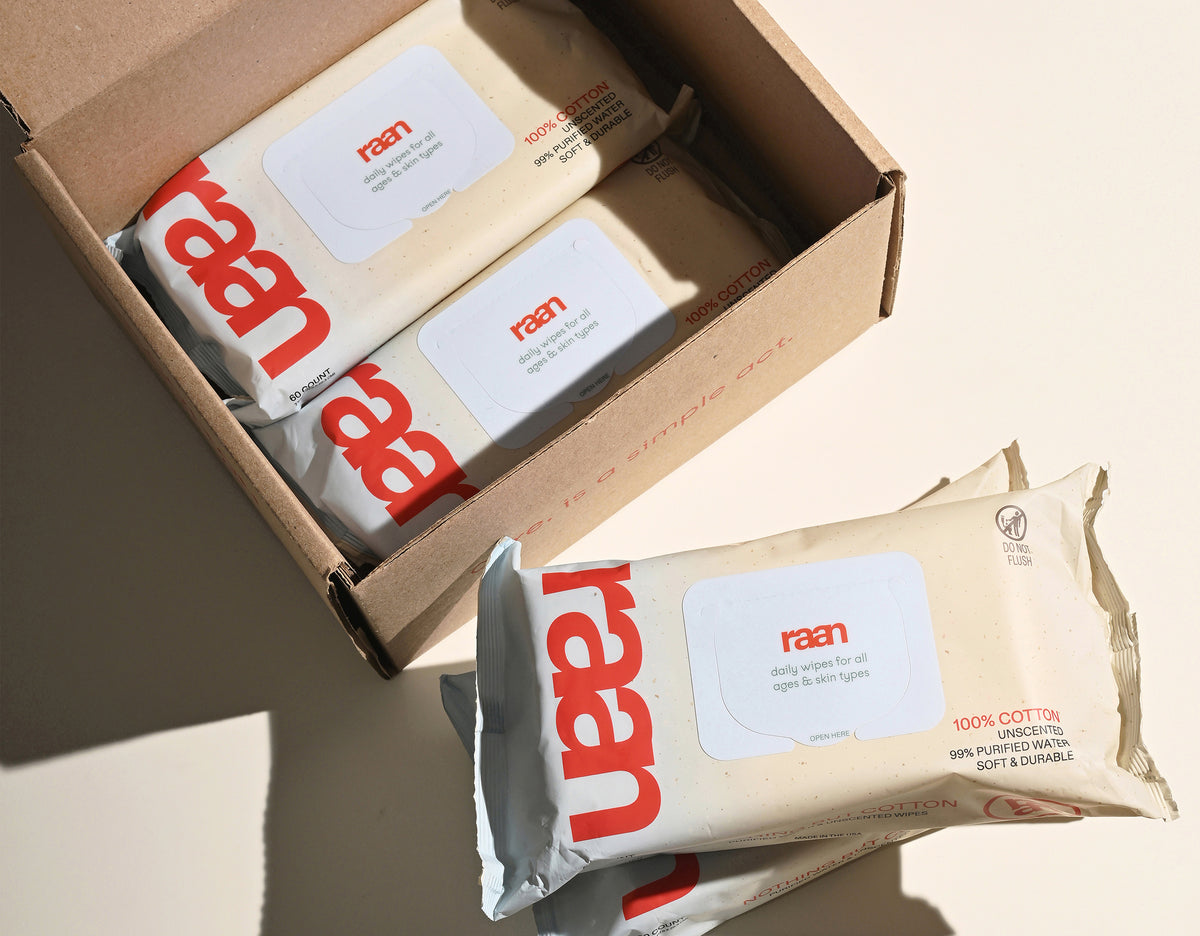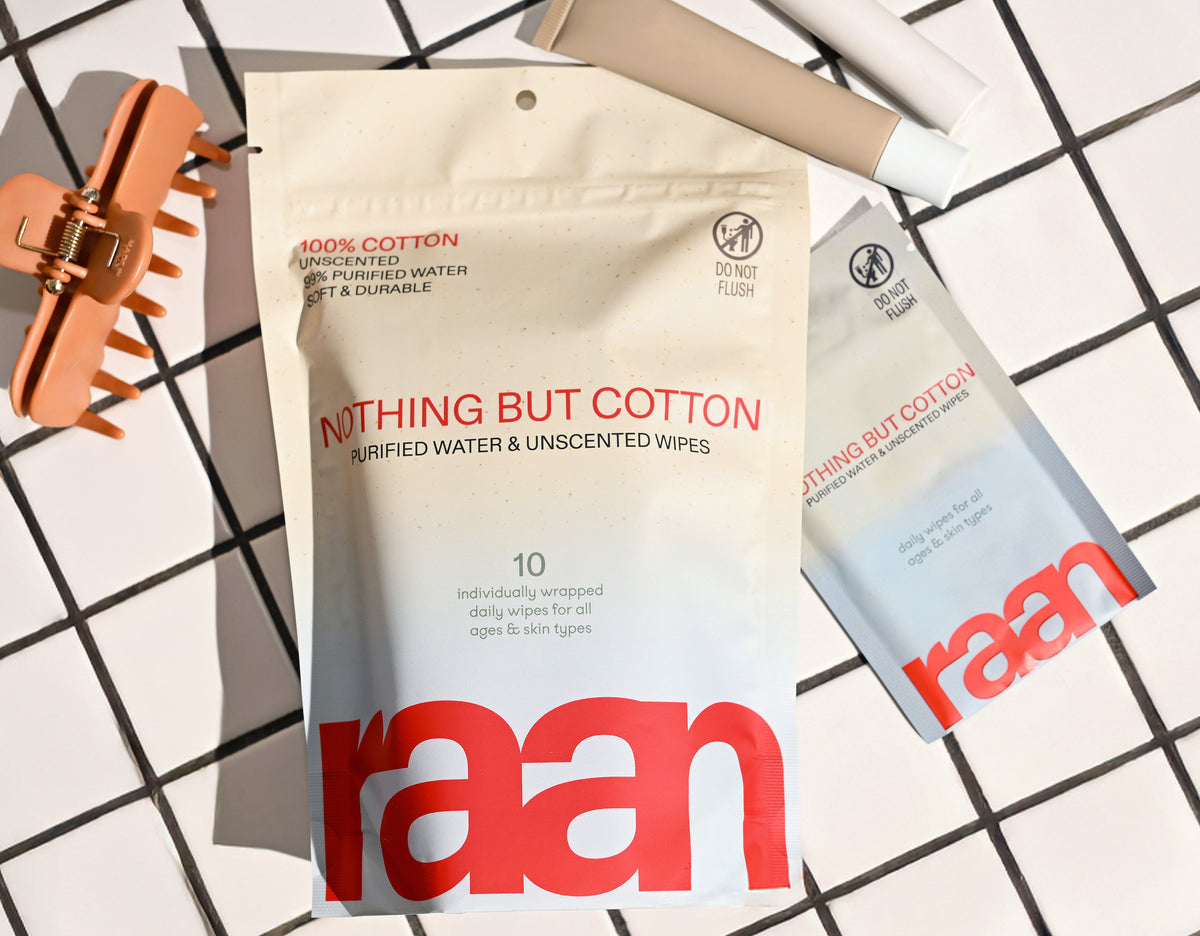Key Takeaways
- The choice between disposable and cloth diapers affects daily routines, family budgets, and baby comfort.
- Disposable diapers use synthetic materials and superabsorbent polymers for single-use convenience.
- Cloth diapers are made from natural fibers like cotton or bamboo and can be washed and reused multiple times.
Table of Contents
- Disposable Diapers Versus Cloth Diapers: What Actually Matters for Real Families
- How Disposable Diapers Work: Materials and Real-World Performance
- How Cloth Diapers Work: Types, Materials, and Practical Systems
- Comparing Disposable vs. Cloth Diapers – Specifics That Actually Matter
- Environmental Impact – Beyond the Hype, In Real Numbers
- Skin Health, Hygiene, and Comfort – What Science and Experience Say
- Step-by-Step How-To Guides for Both Diaper Systems
Disposable Diapers Versus Cloth Diapers: What Actually Matters for Real Families
The disposable diapers versus cloth diapers decision impacts your daily routine, family budget, and baby's comfort in ways that extend far beyond changing tables. Disposable diapers use synthetic materials and superabsorbent polymers for single-use convenience, while cloth diapers rely on natural fibers like cotton or bamboo that you wash and reuse hundreds of times.
This choice matters because it affects four core areas: your baby's skin health, your time and convenience, long-term costs, and environmental impact. New parents, daycare providers, eco-conscious families, and budget-minded households each prioritize different factors, and the science supports multiple approaches depending on your specific needs.
For parents seeking a gentle, reusable solution, unbleached, 100% cotton baby wipes for sensitive skin can be an ideal companion to cloth diapering. If you prefer a convenient, travel-ready option, individually wrapped cotton pocket wipes offer mess-free portability for outings and daycare.
How Disposable Diapers Work: Materials and Real-World Performance

What's Inside: Key Materials and Construction
Modern disposable diapers contain three essential layers: a polypropylene top sheet that wicks moisture away from skin, a superabsorbent polymer (SAP) core that converts liquid to gel, and a polyethylene backsheet that prevents leaks. The elastic leg cuffs use spandex, not latex, to reduce allergic reactions while maintaining flexibility.
The superabsorbent core can hold up to 30 times its weight in liquid, which explains why a single overnight diaper can absorb 10-12 hours of urine without feeling saturated. Wetness indicators use pH-sensitive dyes that change from yellow to blue when exposed to urine, giving parents a visual cue without physically checking the diaper.
Innovations That Matter for Busy Parents
Leak guards create a double barrier system, inner leg cuffs channel moisture toward the absorbent core while outer cuffs prevent side leaks. Newborn-specific designs include umbilical cord cutouts and extra-soft materials, while overnight formulas add 20% more SAP for extended wear. These engineering improvements directly address the most common parent frustrations: leaks during sleep and skin irritation from prolonged wetness.
Addressing Skin Health and Moisture Control
Clinical studies show disposable diapers maintain lower skin pH and reduce moisture contact time compared to cloth alternatives, potentially lowering diaper rash incidence. However, the high absorbency can mask hydration cues in newborns, parents should still monitor urine output frequency rather than relying solely on diaper weight. Fragrance-free options eliminate the most common chemical irritants while maintaining the same absorbent performance.
How Cloth Diapers Work: Types, Materials, and Practical Systems
Cloth Diaper Materials and Forms
Cloth diapers come in four main styles: prefolds (rectangular cotton cloths requiring folding and covers), fitted diapers (shaped like disposables but need waterproof covers), pocket diapers (waterproof outer with removable absorbent inserts), and all-in-ones (sewn-together absorbent and waterproof layers). Unbleached cotton offers maximum absorbency and durability, while bamboo provides natural antimicrobial properties and a softer texture against sensitive skin.
For more on the benefits of natural materials, see our guide on unbleached cotton and its role in baby care products.
Routine for Cloth Use and Changing
Effective cloth diapering requires 24-36 diapers for full-time use, allowing for washing every 2-3 days while maintaining a clean rotation. Change cloth diapers every 2-3 hours during the day and immediately after bowel movements, the lower absorbency compared to disposables means more frequent changes but better awareness of your baby's output patterns. Flushable liners catch solids for easy disposal, while wet bags contain odors during storage.
Cost and Longevity Data
The initial investment ranges from $300-600 depending on diaper type and quantity, but each cloth diaper withstands 100+ wash cycles over 2-3 years of use. A complete stash serves multiple children, making the per-child cost significantly lower over time.
Comparing Disposable vs. Cloth Diapers – Specifics That Actually Matter
The real differences between disposable diapers versus cloth diapers come down to measurable factors that impact your daily routine, budget, and baby's comfort. Rather than vague claims about "better" options, here's what the data shows about absorbency, cost, environmental impact, and skin health.
Absorbency & Leak Protection
Disposable diapers use superabsorbent polymers (SAP) that can hold 20-30 times their weight in liquid, making them exceptionally effective for overnight use and heavy wetters. Modern disposables often include wetness indicators and elastic leg guards that create a secure seal around thighs and waist.
Cloth diapers rely on natural fiber absorption, cotton holds about 25 times its weight, bamboo slightly more. The key difference is that cloth requires proper layering (inserts plus covers) and more frequent changes to prevent leaks. For overnight protection, cloth users typically double up on inserts or add hemp boosters, though this creates more bulk than disposables.
Cost Over Time
| Time Period | Disposable Cost | Cloth Cost | Notes |
|---|---|---|---|
| Initial Investment | $30-50 | $300-600 | Cloth requires full stash upfront |
| Year 1 Total | $900-1,200 | $360-660 | Includes detergent, utilities for cloth |
| Year 2 Total | $800-1,000 | $60-120 | Only ongoing costs for cloth |
| Multiple Children | Full cost per child | Minimal additional cost | Cloth stash reused entirely |
The math shifts dramatically after the first year. Families using cloth for multiple children see the most significant savings, with the initial investment spread across several years of use.
Environmental Impact – Data-Driven
Disposable diapers contribute approximately 3.5 million tons of waste annually to US landfills, with each diaper taking an estimated 500+ years to decompose. A single child uses roughly 6,000-8,000 disposable diapers from birth to potty training, creating about 2,000 pounds of landfill waste.
Cloth diapers consume 10-30 gallons of water per wash cycle, with families typically washing every 2-3 days. The environmental trade-off involves water and energy consumption versus solid waste generation. Line-drying cloth diapers and washing in cold water significantly reduces the energy footprint.
Skin Health & Diaper Rash
Research on diaper rash rates shows mixed results between disposable diapers versus cloth diapers, with change frequency being the most critical factor regardless of type. Disposables' high absorbency can keep skin drier longer, but may also make it harder to monitor urine output in newborns, an important health indicator in the first weeks.
Cloth diapers made from unbleached cotton or bamboo eliminate exposure to fragrances, lotions, and synthetic materials found in some disposables. However, detergent residue from improper washing can cause irritation. The key for both types: change every 2-3 hours and immediately after bowel movements.
For a comprehensive look at top-performing options, see our review of the best infant diapers for sensitive skin and eco-conscious families.
Convenience & Practicality
Disposables excel in travel situations, daycare settings, and when caregivers change frequently. They require no preparation, special storage, or washing knowledge. Most daycare centers accept disposables without question, while cloth requires providing clean diapers daily and taking soiled ones home.
Cloth diapers demand more planning, maintaining a clean stash, managing wash routines, and carrying wet bags for outings. However, they offer adjustability that disposables can't match, with snaps or Velcro allowing custom fits for different body types. Parents never face middle-of-the-night store runs when using cloth.
To simplify your routine, consider the mess-ready pack for all-in-one cleaning and diapering essentials, or explore the starter set for a complete introduction to cloth diapering supplies.
Environmental Impact – Beyond the Hype, In Real Numbers

The environmental comparison between disposable diapers versus cloth diapers involves concrete data about resource consumption, waste generation, and end-of-life impact. Here's what the numbers actually show, without the marketing spin.
Raw Materials & Production
Disposable diapers require wood pulp (from trees), petroleum-based plastics for the outer layer, and superabsorbent polymers manufactured through energy-intensive chemical processes. Each diaper contains approximately 1 tablespoon of crude oil in various forms, from the plastic components to the manufacturing energy.
Cloth diapers typically use cotton (requiring significant water and often pesticides during farming) or bamboo (a more sustainable crop requiring 30% less water to grow). The manufacturing process involves fewer chemical treatments, especially for unbleached options, though industrial textile production still consumes considerable energy.
For more on keeping your cloth diapers fresh and hygienic, read our tips for clean diapers and best laundering practices.
Use-Phase Impact
A typical baby generates 50-60 pounds of disposable diaper waste yearly, while cloth diapers require approximately 10-30 gallons of water per wash cycle. When you wash cloth diapers 2-3 times weekly, annual water usage reaches 1,500-4,500 gallons per child.
The key difference: disposables create immediate landfill burden, while cloth diapers shift environmental impact to water treatment systems and energy grids. Neither option is environmentally neutral, but the timing and type of impact varies significantly.
End-of-Life Disposal Reality
Disposable diapers persist in landfills for 200-500 years, with plastic components never fully biodegrading. Recent "biodegradable" disposables break down in 3-6 months under industrial composting conditions, but most end up in standard landfills where decomposition stalls.
Quality cloth diapers withstand 200-300 wash cycles, serving 2-3 years per child. After outgrowing their primary use, they transition to cleaning rags, donate to other families, or enter textile recycling programs. This extended lifecycle significantly reduces per-use environmental impact. For a scientific perspective, see this peer-reviewed study on diaper environmental impact.
Skin Health, Hygiene, and Comfort – What Science and Experience Say
Diaper rash affects 50-60% of babies regardless of diaper type, with change frequency mattering more than material choice. However, different diaper systems present distinct considerations for sensitive skin management.
Research Finding: Studies show no significant difference in rash rates between disposable diapers versus cloth diapers when both are changed every 2-3 hours consistently. For additional medical insight, see this analysis of diaper rash causes.
Preventing and Treating Diaper Rash
Effective rash prevention centers on three factors: frequent changes, thorough cleaning, and proper drying. Change both disposable and cloth diapers every 2-3 hours, immediately after bowel movements.
Critical technique: Pat skin completely dry before applying fresh diaper. Skip talc-based powders entirely, they can irritate respiratory systems and clog pores. Use barrier creams sparingly with cloth diapers, choosing unscented formulas that won't build up on fabric.
Monitoring Output and Health Cues
Disposable diapers' superior absorbency can mask important health indicators in newborns. Pediatricians recommend tracking wet diapers during the first weeks, newborns should produce 6-8 wet diapers daily after day five.
Cloth diapers provide immediate feedback on urine output, color, and frequency. This transparency helps parents recognize dehydration, urinary tract infections, or other health concerns earlier. Wetness indicators in disposables help, but visual assessment remains more comprehensive.
Comfort for Sensitive Skin
Babies with eczema or chemical sensitivities often benefit from unbleached cotton or bamboo cloth diapers. These natural fibers allow better airflow and contain fewer synthetic materials. For disposables, choose fragrance-free, hypoallergenic options with minimal dyes.
Test new diaper types gradually: use for 24 hours, checking for redness, irritation, or unusual reactions. Switch back to previous type immediately if skin issues develop.
Step-by-Step How-To Guides for Both Diaper Systems
Efficient diaper changing requires preparation and technique, regardless of system choice. These proven methods minimize mess, reduce changing time, and ensure proper fit.
How to Change Disposable Diapers Effectively
Preparation: Lay out fresh diaper, wipes, and barrier cream within arm's reach. Open the new diaper completely before removing the soiled one.
Technique: Unfasten tabs and fold them back to prevent sticking to skin. Lift baby's legs gently, clean thoroughly from front to back, then slide fresh diaper underneath with tabs aligned at belly button level. Secure snugly, you should fit one finger between diaper and skin at waist.
Fit check: Leg cuffs should tuck around thighs without gaps, and waistband should sit just below navel. Elastic should feel secure but not tight enough to leave marks.
How to Change Cloth Diapers (All Systems)
Prefold method: Remove soiled diaper and cover, dispose of liner if used. Fold clean prefold in thirds, place in waterproof cover, position under baby, and secure cover snaps or velcro.
All-in-one method: Functions like disposables, remove soiled diaper, clean baby, position fresh diaper, and fasten. Check that inner absorbent layer lies flat against skin without bunching.
Leak prevention: Ensure complete coverage around legs and back. Cloth should extend slightly beyond cover edges. Adjust rise snaps for proper torso fit as baby grows.
Caring for Used Cloth Diapers
Store soiled diapers in breathable wet bags or open pail, avoid sealed containers that trap ammonia. Wash within 2-3 days maximum to prevent odor buildup and fabric damage.
Wash routine: Cold rinse cycle removes waste, hot wash (140°F) with appropriate detergent amount, extra rinse eliminates residue. Line dry when possible to extend fabric life and naturally bleach stains.
Frequently Asked Questions
What are the main differences in materials and construction between disposable and cloth diapers?
Disposable diapers use synthetic materials like polypropylene and polyethylene, combined with a superabsorbent polymer core that locks in moisture. Cloth diapers are made from natural fibers such as cotton or bamboo and are designed to be washed and reused multiple times, relying on absorbent fabric layers rather than gels or plastics.
How do disposable diapers help in maintaining better skin health compared to cloth diapers?
Disposable diapers wick moisture away from the skin using a polypropylene top sheet and a superabsorbent core, which helps keep skin drier and may reduce irritation. Cloth diapers, while made from breathable natural fibers, require frequent changing and thorough washing to prevent moisture buildup that can affect skin comfort.
What are the environmental impacts of using disposable diapers versus cloth diapers?
Disposable diapers generate significant waste due to their single-use design and synthetic materials, contributing to landfill volume. Cloth diapers reduce waste by being reusable but require water and energy for laundering, so their environmental impact depends on washing practices and detergent choices.
How do the convenience and cost factors compare between disposable and cloth diapering systems for families?
Disposable diapers offer high convenience with easy disposal and no laundering, but costs add up over time with continuous purchases. Cloth diapers require upfront investment and regular washing, which takes time and effort, but can be more cost-effective over the long term for families willing to manage the routine.






